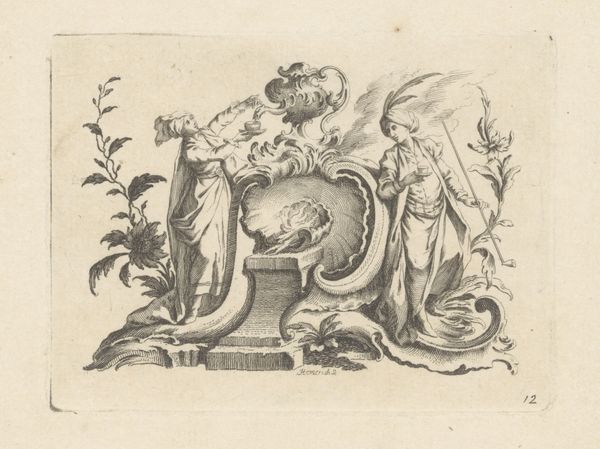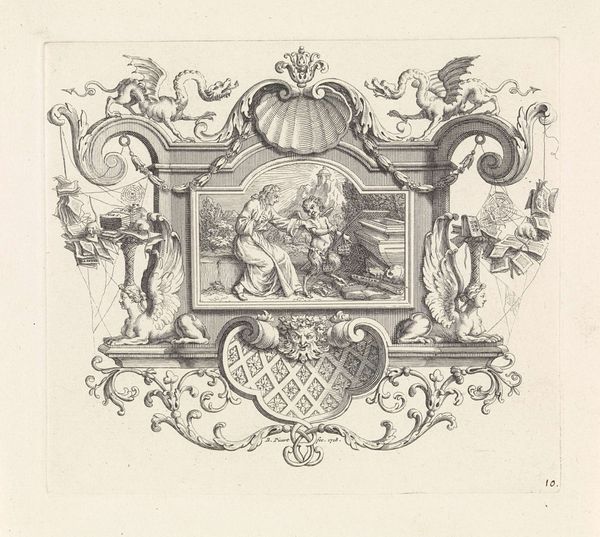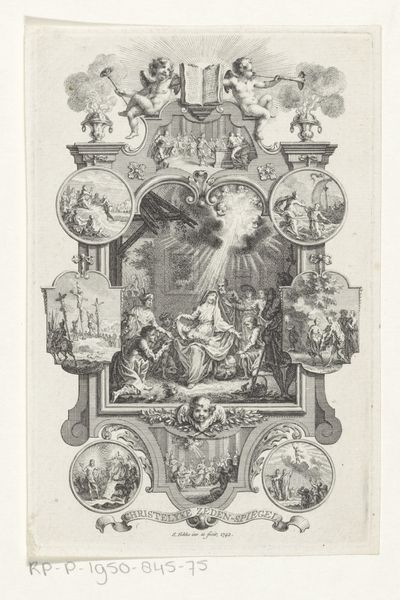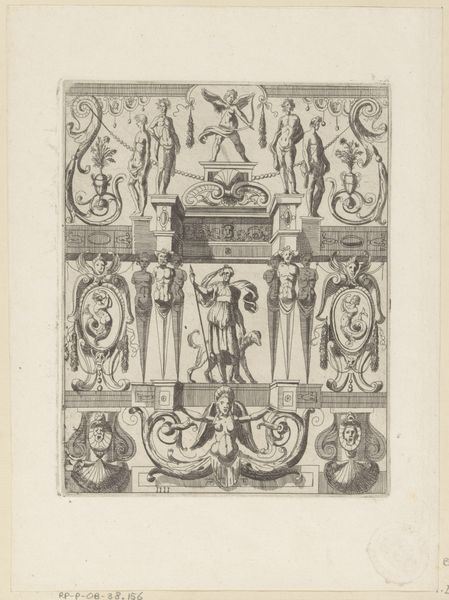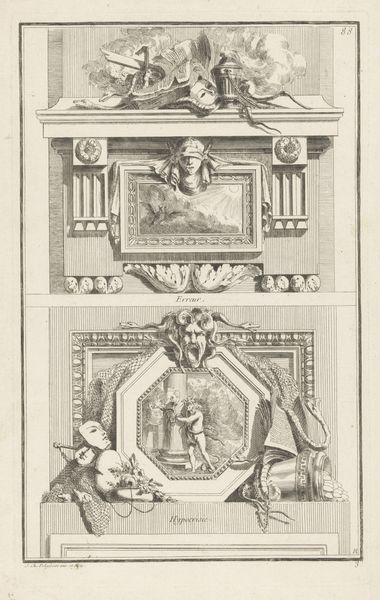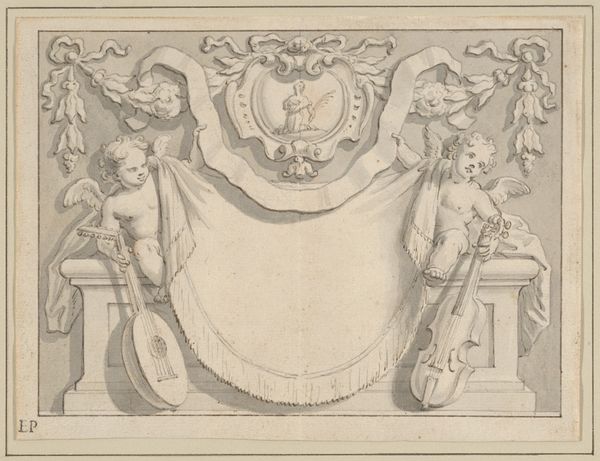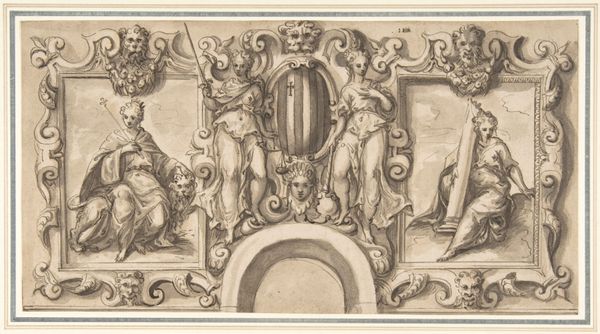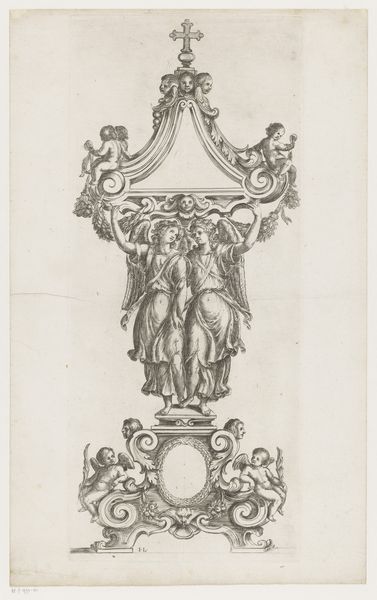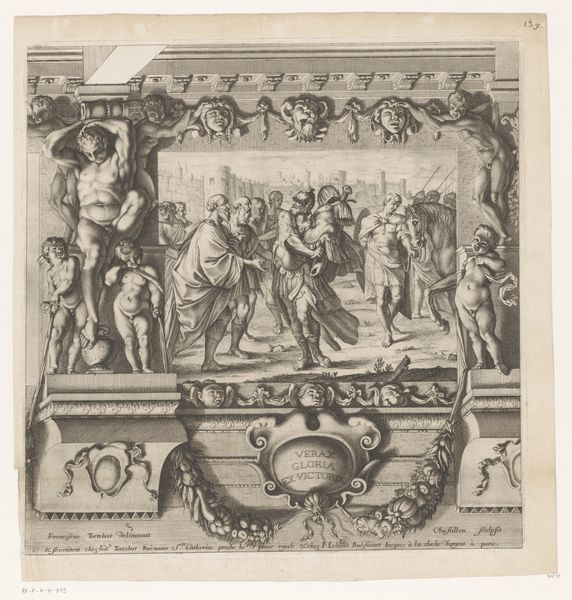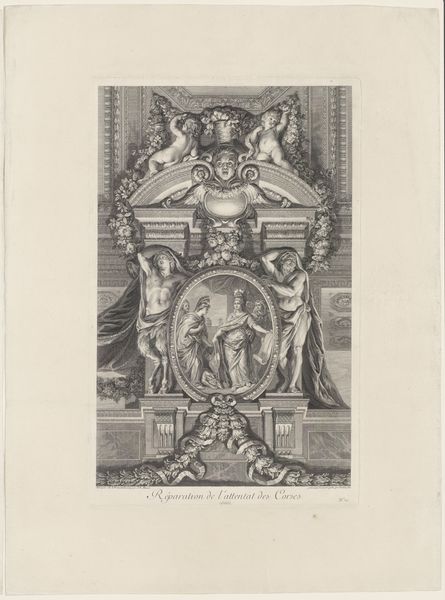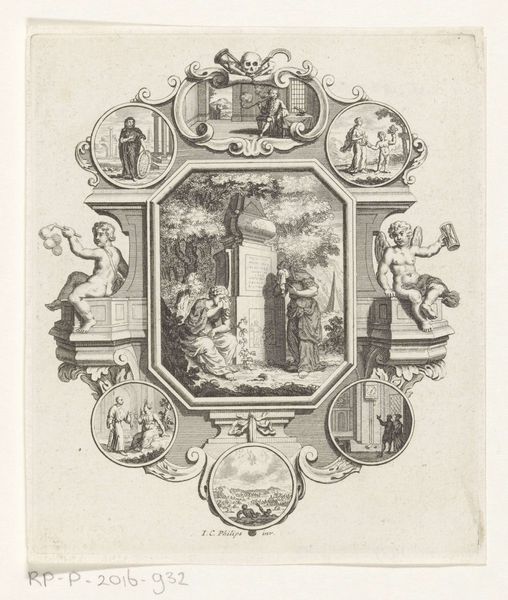
Allegorische voorstelling met zes putti met portret van Jesaja en boom van Jesse 1724
0:00
0:00
print, engraving
#
allegory
#
baroque
# print
#
old engraving style
#
figuration
#
engraving
Dimensions: height 172 mm, width 175 mm
Copyright: Rijks Museum: Open Domain
Abraham Zeeman made this allegorical print, featuring putti, Isaiah’s portrait, and the Tree of Jesse, sometime before 1754. It’s an etching, meaning the image was incised into a metal plate, probably copper, and then printed. Etching is an indirect process. You coat the plate with a waxy ground, draw through it with a needle, and then bathe the whole thing in acid. This bites into the exposed metal, creating lines. The artist can control the depth of these lines, and thus the darkness of the printed image, by varying the immersion time. In this particular print, the etched line is used to create a riot of detail. The artist has even imitated the effects of engraving, a more painstaking method of directly incising the metal. Prints like these were made for a growing consumer market. They took skill, but were much quicker to produce than unique works of art. Appreciating the labor involved, and the commercial context, brings us closer to the mindset of the artist and his audience.
Comments
No comments
Be the first to comment and join the conversation on the ultimate creative platform.

